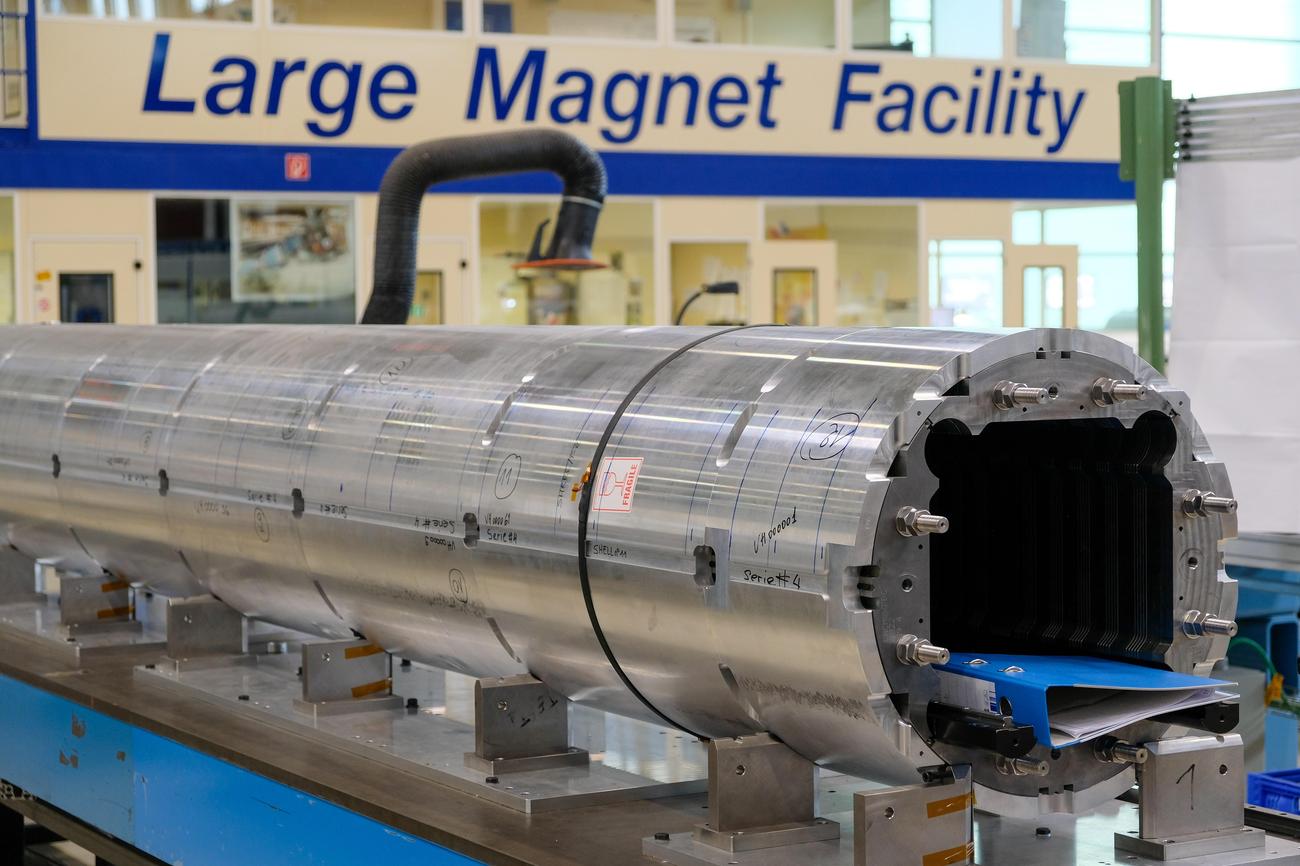Get ready to be amazed as we delve into the captivating world of magnets and uncover some truly astonishing facts! In this article, we will unveil a collection of surprising and lesser-known information about these extraordinary scientific phenomena. As seasoned science writer with a background in physics, I am passionate about unravelling the secrets behind magnets and their intricate mechanisms. With my expertise, we will explore the remarkable properties of magnets, breaking down complex concepts into accessible language for readers of all scientific backgrounds. Prepare to be intrigued and enlightened as we embark on this journey of magnet marvels!

Surprising Facts About Magnets
Who would have thought that these little objects we often take for granted could hold such captivating wonders? Magnets, the unsung heroes of our everyday lives, possess astonishing properties that not only fascinate scientists but also have practical applications in various fields. In this article, we will embark on a journey to uncover some surprising facts about magnets that will surely leave you in awe.
1. Magnets Have a Connection with the Core of Our Planet
Did you know that Earth itself is like a giant magnet? It has a magnetic field that extends out into space, surrounding our planet and protecting us from harmful solar radiation. This magnetic field is generated deep within the Earth’s core, where a massive amount of liquid iron churns and moves. As a result, Earth’s magnetic field constantly fluctuates and provides us with one of the most vital natural shields.
“The magnetic field that surrounds our planet is not just a force of nature, but a protector of life itself.”
2. Magnetic Fields Can Affect the Behavior of Living Organisms
Magnets not only influence inanimate objects but also have the power to affect living organisms. It has been observed that certain animals, such as birds and turtles, can navigate and migrate using Earth’s magnetic field. How they do this remains a mystery, but scientists believe that these creatures possess a biological compass that enables them to sense and align with the magnetic field lines.
“The invisible dance of magnetism guides the way for many remarkable journeys in the animal kingdom.”
3. Magnets Can Generate Electricity
Faraday’s law of electromagnetic induction states that a changing magnetic field can induce an electric current in a conductor. This amazing principle forms the basis of how generators and power plants produce electricity. By rotating a coil of wire within a magnetic field, an electric current is generated, paving the way for abundant energy production. In fact, this concept is crucial to the functioning of most modern electrical devices.
“Magnets and electricity, the dynamic duo that powers our world.”
4. The North Pole of a Magnet is Not the Same as Earth’s North Pole
Contrary to what many believe, the north pole of a magnet is not the same as Earth’s north pole. In fact, magnets have their own magnetic field with a north and south pole. When two magnets are brought close together, the opposite poles attract each other, while similar poles repel. This fundamental property is what allows magnets to stick to each other or to certain materials like iron.
“When opposites attract, magnets work their magic.”
5. Magnets Can Make Objects Levitate
Have you ever dreamed of objects defying gravity and floating in mid-air? Well, with the help of magnets, this seemingly impossible feat can become a reality. By using powerful magnetic fields generated by superconducting materials, scientists have successfully levitated objects, overcoming the force of gravity. This technological marvel holds great potential for transportation and energy-efficient solutions.
“Magnets, the enablers of levitation, turning dreams into reality.”
6. The Earth’s Magnetic Field Has Flipped in the Past
The Earth’s magnetic field is not fixed and has a history of flipping. Over the course of millions of years, the Earth’s magnetic poles have reversed their positions, with the north pole becoming the south pole and vice versa. These magnetic reversals can be detected by studying the alignment of magnetic minerals in rocks, providing valuable insights into the dynamic nature of our planet.
“The Earth’s magnetic field, a storyteller of its own evolution.”
7. Magnetism Can Heat Up Objects
When you think of magnets, heat may not be the first thing that comes to mind. However, it turns out that magnets can actually generate heat when properly used. This phenomenon, known as magnetic induction heating, occurs when a magnetic field rapidly changes within a conducting material. It has practical applications in processes such as induction cooking and heating systems, where efficiency and control are key.
“Harnessing the power of magnetism to bring warmth into our lives.”
8. Magnetic Resonance Imaging (MRI) Relies on Magnets
Magnetic resonance imaging, commonly known as MRI, has revolutionized the field of medical diagnostics. This technology uses a combination of strong magnetic fields and radio waves to create detailed images of the body’s internal structures. By manipulating the alignment of atomic nuclei in the body, MRI scanners provide valuable information for diagnosing and monitoring a wide range of medical conditions.
“Magnets revealing the intricate secrets hidden within our bodies.”
In conclusion, magnets continue to captivate us with their surprising properties and extraordinary capabilities. From generating electricity to influencing the behavior of living organisms, magnets are essential elements of our daily lives and scientific exploration. As we delve deeper into the mysteries of magnets, their marvels unfold, reminding us of the spectacular wonders that exist within the realm of science.
“Magnet magic awaits those who dare to explore the captivating world of magnetic wonders.”
Magnets have always fascinated mankind with their mysterious powers. But did you know that there are important facts about magnets that you probably didn’t know? Well, let me enlighten you. From their ability to attract certain materials to their use in various technological applications, magnets play a crucial role in our everyday lives. To uncover these fascinating facts and delve deeper into the world of magnets, click here: important facts about magnets. Prepare to be amazed by the wonders of magnetism as you embark on this captivating journey!
FAQ
Q: What are some surprising facts about magnets?
A: Magnets have several fascinating properties that may surprise you. For example, did you know that the Earth acts like a magnet? It has a magnetic field that helps to guide compass needles. Additionally, magnets can repel or attract each other, depending on their poles. This behavior is a result of the alignment of tiny magnetic domains within the material. Magnets also have the ability to induce electric currents in conductive materials, a phenomenon known as electromagnetic induction.
Q: How do magnets work?
A: Magnets work based on the principles of magnetism. They have two poles, called the North pole and the South pole. Opposite poles attract each other, while like poles repel. This is due to the alignment of the magnetic domains within the magnet. These domains are clusters of atoms with aligned magnetic moments. When the domains align in the same direction, the magnet becomes stronger. The magnetic field produced by magnets can influence other objects and materials, resulting in various magnetic effects.
Q: Can magnets lose their magnetic properties?
A: While magnets are known for their long-lasting magnetic properties, they can gradually lose their magnetism over time. This process is called demagnetization. Factors such as exposure to heat, strong external magnetic fields, and physical damage can weaken or even erase the magnet’s magnetic field. However, certain types of magnets, like neodymium magnets, are more resistant to demagnetization. It’s important to handle magnets carefully and keep them away from conditions that can impact their magnetism.
Q: Are there different types of magnets?
A: Yes, there are different types of magnets, each with unique properties. Permanent magnets, like the ones commonly found in refrigerator magnets, retain their magnetic properties once magnetized. Electromagnets, on the other hand, produce a magnetic field when an electric current passes through a coil of wire. Temporary magnets, such as iron, can be made magnetic when exposed to a strong magnetic field, but they lose their magnetism once the field is removed. There are also special magnets, like the rare-earth magnets, which are incredibly strong and used in various applications.
Q: What are some practical applications of magnets?
A: Magnets have a wide range of practical applications in our everyday lives. They are used in electric motors, generators, and transformers to convert mechanical energy into electrical energy and vice versa. Magnets are essential components in devices like speakers, headphones, and microphones, which utilize the interaction between magnetic fields and electric currents to produce sound. Magnetic resonance imaging (MRI) machines in medical settings use powerful magnets to generate detailed images of the human body. Magnets are also used in magnetic levitation trains, credit cards, and data storage devices like hard drives and magnetic tapes.
“`json
“`
- Unlock Elemental 2 Secrets: Actionable Insights Now - April 2, 2025
- Lot’s Wife’s Name: Unveiling the Mystery of Sodom’s Fall - April 2, 2025
- Photocell Sensors: A Complete Guide for Selection and Implementation - April 2, 2025
















